Portraits of life in America’s great Motor City, after a great fall. By Dave Jordano

Detroit is my hometown, but I’ve been gone for over three decades. My father, who worked all his life for General Motors, used to joke that our family had motor oil running in our veins. Even after all these years away, I still believe there is some small truth in what he said.
These photographs are my reaction to all the negative press that Detroit has had to endure over the past several years. I was initially drawn to the same subjects other photographers were interested in; the crumbling factory interiors, the empty lots and burned-out houses that consume a third of the city, the massive abandoned commercial infrastructure. It took me a week of shooting this kind of subject matter to realise I was contributing nothing to a subject most people already knew a lot about.
I began looking at the various neighbourhoods within the city and all the people who live in them. Despite the harsh reality of living in a post-industrial city that has fallen on the hardest of times, the human condition does thrive. Notwithstanding the recent press about Detroit’s efforts to rebound from its recent bankruptcy, which is in all ways promising, my focus continues to rest on the current conditions that affect many of those who have fallen through the cracks. The lives of these forgotten and marginalised poor people will only minimally be improved by the recent redevelopment of the city.
I’ve found that most Detroiters wear their pride for the city much like an honoured badge of courage. If you can survive here, you can survive just about anywhere. My hope is that this work will convey that Detroit is a city made up of many small communities, all building a way of life through perseverance, hope, and sheer determination. It is a city clinging to the vanished ideals of an urban oasis that once hailed itself as one of the most beautiful and prosperous cities in America, and has now fallen from grace. This project is not about what’s been destroyed, but about what’s been left behind.

Sara and Shad, Goldengate Street, 2013
Goldengate Street is a unique community of outsiders who choose to live self-sufficiently and off-grid. Abandoned houses that once dotted the street have been taken over by a group who call themselves ‘Fireweed Universe City’. Collectively, everyone lives and works as a group; repairing houses, cooking communal meals, gardening and raising chickens together. They have involved themselves with the local community by establishing a bicycle repair shop where kids in the area can learn to build and maintain a bike for free. They also founded a community centre that provides movie nights, open mic events, and self-defence training.
The street has also become a popular destination for couch surfers who come from all over the world. Visitors can stay for free so long as they volunteer to help out the community. Their efforts are a positive change for one of the most decimated and blighted areas in Detroit.
Shad and Sara were new arrivals to Goldengate Street in 2013. Sara has stayed but Shad comes and goes.
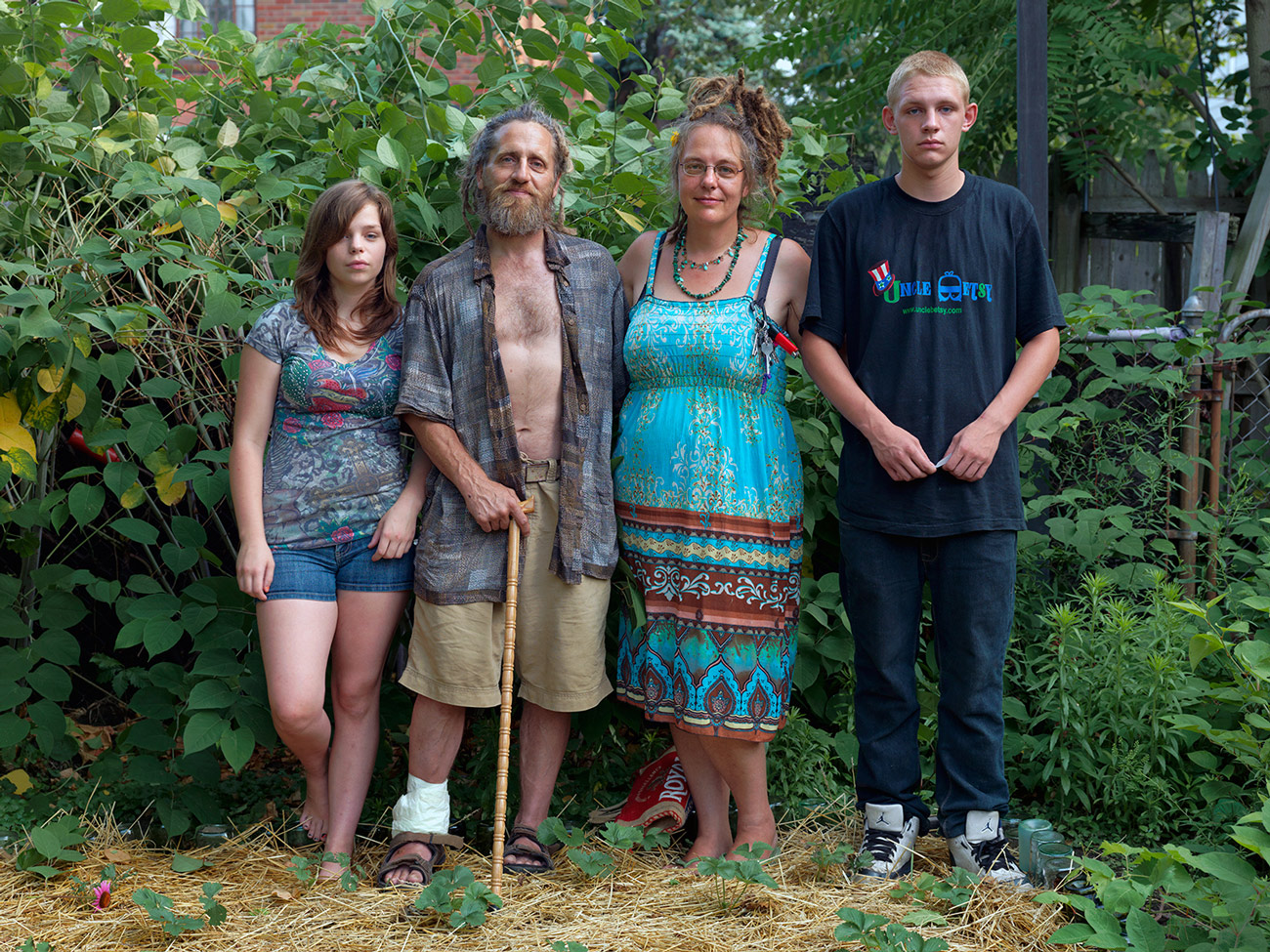
Mary with family and friend, Goldengate Street, 2012
Mary and her daughter Claire live full-time on Goldengate in a house that she is squatting in but the owner lets her stay there. It’s better than letting the house sit empty and be subject to scrappers and vandals.

Diane sleeping, 2013
Diane was homeless and had nowhere to stay so a friend had agreed to take her in for a few days. I chose to photograph her sleeping because when you sleep your mind is at peace and your problems don’t exist. The next time I stopped by to check on her she had moved on.
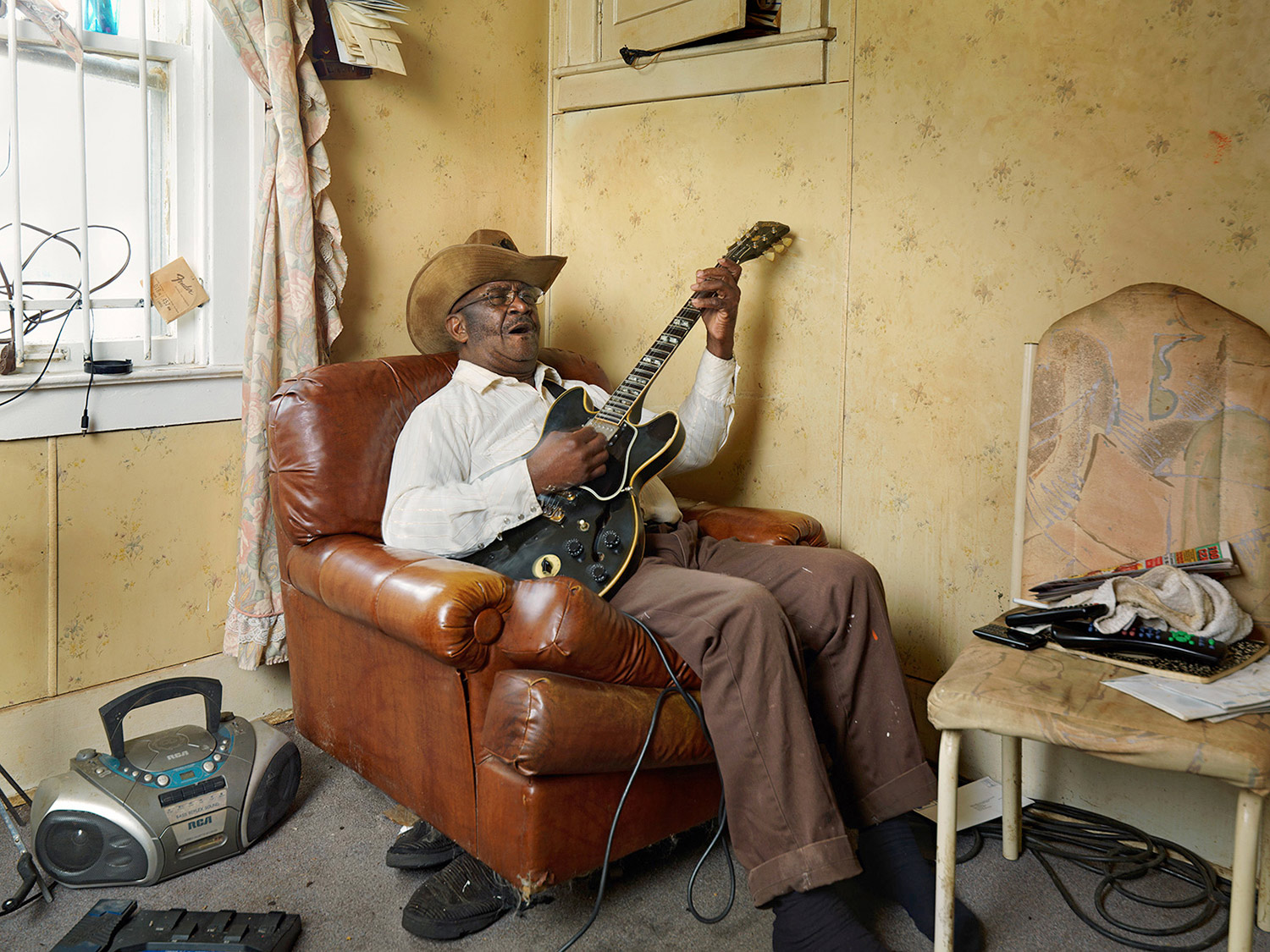 Glemie, 2011
Glemie, 2011
Glemie, a retired truck driver and fifty-year resident of Detroit, is an accomplished blues singer, but he’s also known for his small game hunting skills. Every fall he hunts an average of 150 raccoons, which he skins, dresses, and sells as food to clients. This extra income supplements his meagre retirement benefits. Born in southern Arkansas and the son of a sharecropper, Glemie was often required to pick 100 pounds of cotton a day as a child and raccoon was often the staple family meal of the day.

Charlie with his bike, 2012
Charlie has had every car he’s ever owned stolen so he bought himself a bike and then personalized it to celebrate his theft-free life.
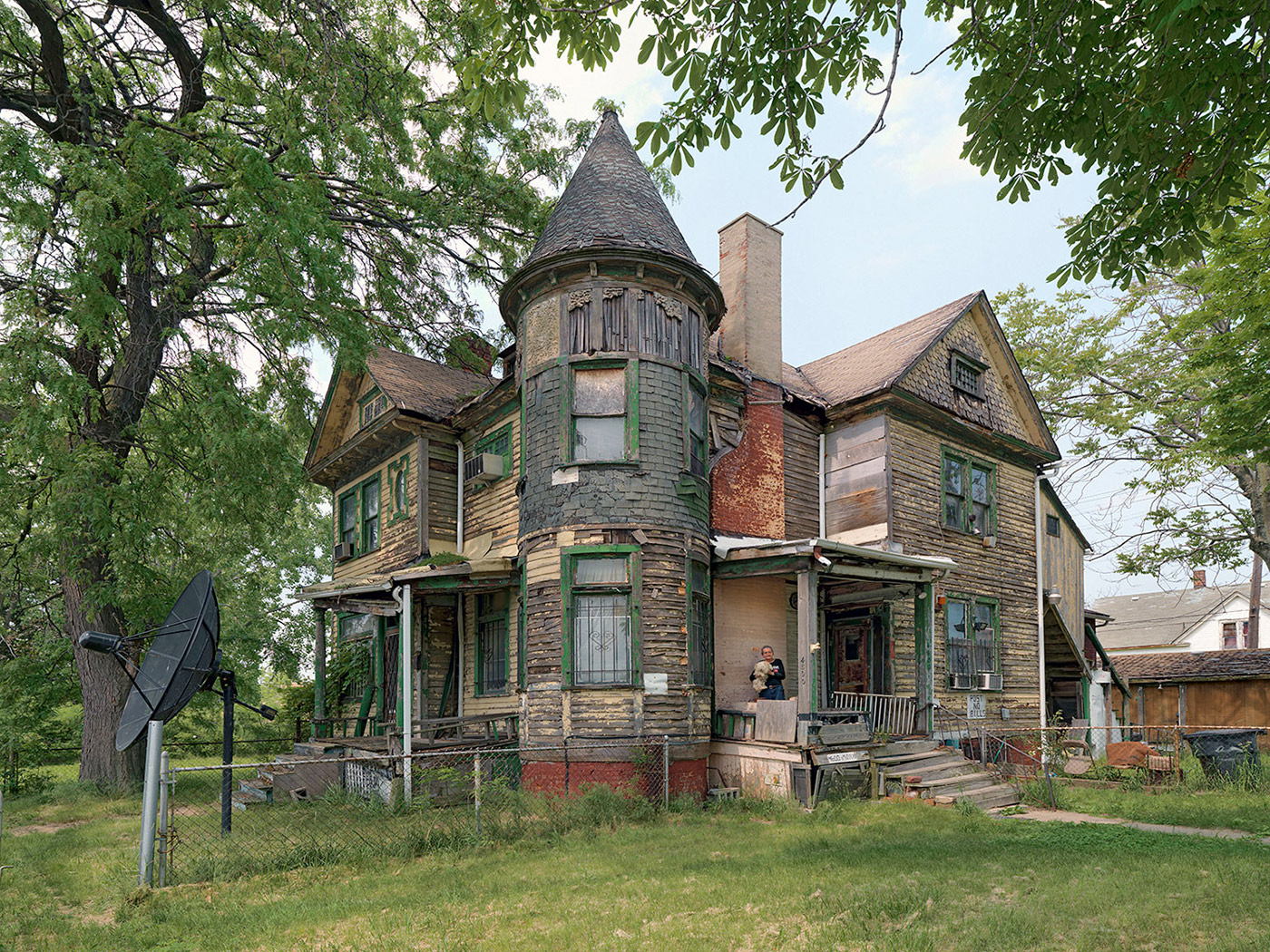
Algernon with Babe, 2010
Algernon has lived in this house for the past 42 years. After raising four children he now lives alone as a widower and only occupies the first floor of the house. Upkeep has been minimal at best, but the house still maintains elements of its original grandeur. Structures such as this begin to take on a life of their own, gracing themselves with symbolic undertones, such as longevity, memory, and perseverance.

Rogue signage, 2011
This sign was made by Andre Ventura, a resident who lives on the street, after several gun shots were fired while children were playing in the corner park. He said you could hear the bullets flying overhead. The sign (not the gunfire) garnered the attention of several TV and radio stations that covered the story of Andre’s vigilante antics. Andre has made over 250 hand-painted signs that he has placed throughout the city to create awareness about crime, social issues, and political corruption in the city.

Kat in her new house, 2014
Kat (Kathina) took over an abandoned city corner lot next to her house and transformed it into a neighbourhood park complete with lighting, sculpture and flower and vegetable gardens. Her initiative was the first visible improvement to the street in over 30 years.
Kat also takes in homeless people who need shelter and provides them with basic essentials like clothing, blankets and food. All her efforts are supported through the generous donations of friends, and her unyielding faith.
She recently moved into this abandoned house just around the corner from her current residence. She’s in the process of trying to purchase it in order to continue her ongoing mission to improve the neighborhood. I’ve known Kat now for three years and I’ve never met someone who is as devoted to others as she is.
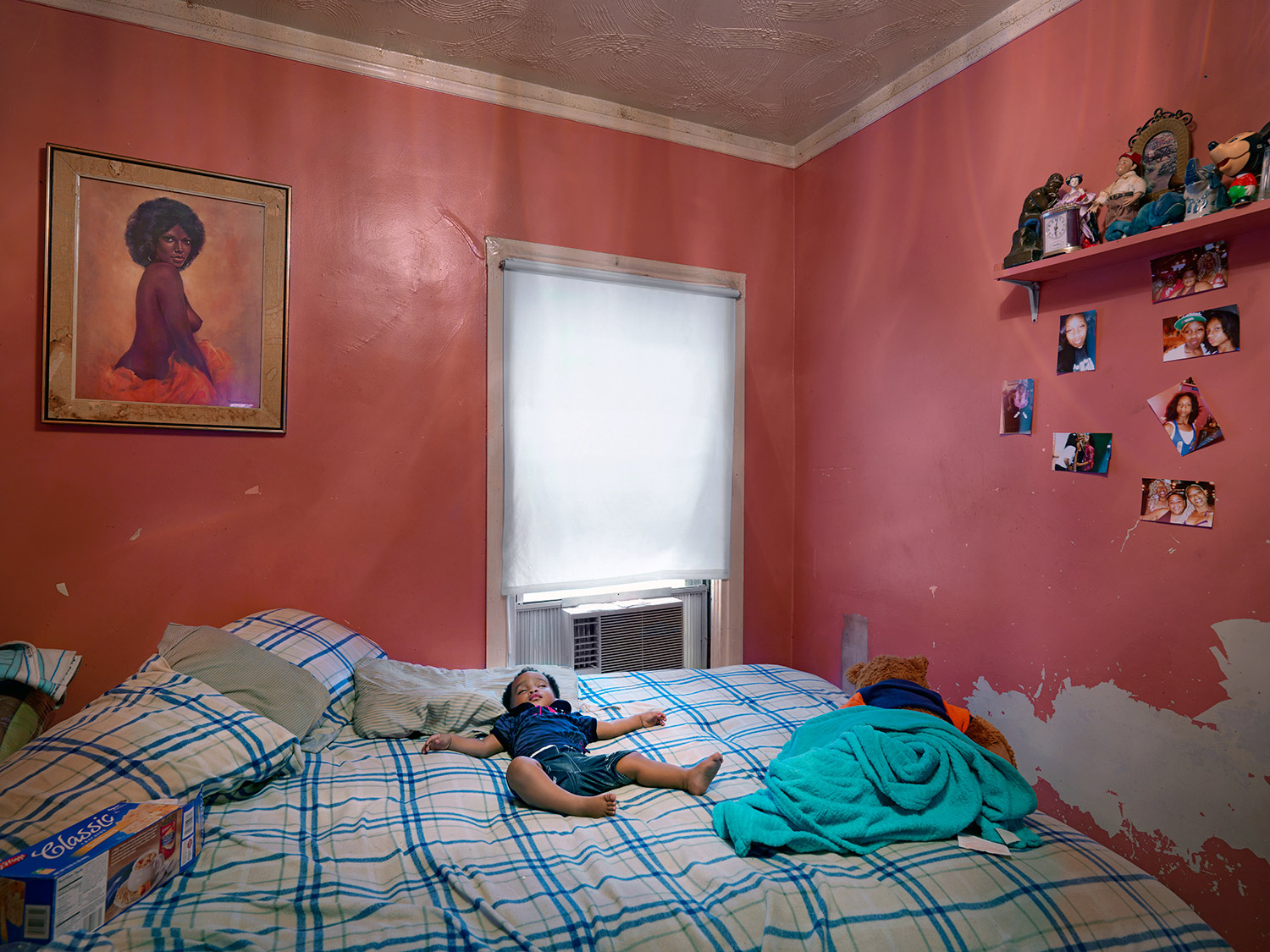
Semira sleeping in Kat’s house, 2012
The child of a homeless mother sleeps in Kat’s bedroom. There are often as many as eight people staying in her small two-bedroom house.

Calvin with his pit bull, 2011
Calvin does maintenance work for local Burger King restaurants. He was cleaning out his work truck when one of his pit bulls came running out of the house. He owns three in total and they’re all well-trained, friendly dogs. He says there are no bad pit bulls, only bad owners.

Mo, birdman of Detroit, 2012
Mo loves pigeons and has been raising them ever since he was a young boy living in Iraq. In the past 50 years he has raised more than 2,000 of them. He has built several makeshift pigeon coops that are either attached to his modest house or around his yard, and at any one time there could be over one hundred birds living on his property. His neighbourhood is notorious for prostitution and his tenant Lori, a local hooker who has been living with him for the past two years, helps share the living expenses of the household. Mo prefers not to know what Lori does and he will not let her bring customers into the house, but through the shared arrangement they have each found companionship and mutual support.

Angela and Aya, North Corktown, 2010
Angela is one of a growing number of young, urban agra-farmers who have moved back into the city and taken over abandoned city lots to farm on. Detroit has been designated a food desert meaning that there’s not one national chain grocery store within the city limits. Residents instead have to rely on their own initiative if they want to have fresh produce that is readily available, and literally hundreds of community gardens have sprung up all over the city to counter the shortage.

Brad, 2010
Brad will scrap this abandoned factory site for the next year, digging in the ground and taking from it about 1,000 pounds of recyclable metal a day. He will make on average $110 for a day’s work. He’s been unable to find employment, but took it upon himself to find a way to earn some money and to do something positive about his situation.

Charles, Eastside, 2015
Charles has been squatting in this abandoned house for the last six months. The crane company he worked for went out of business after they lost all of their automotive contracts to foreign competition. Recently divorced and unable to find work and his unemployment benefits depleted, he’s trying to fix up this abandoned house by salvaging materials from other abandoned buildings. His house was recently ransacked by thieves that broke in and stole what little valuables he had.
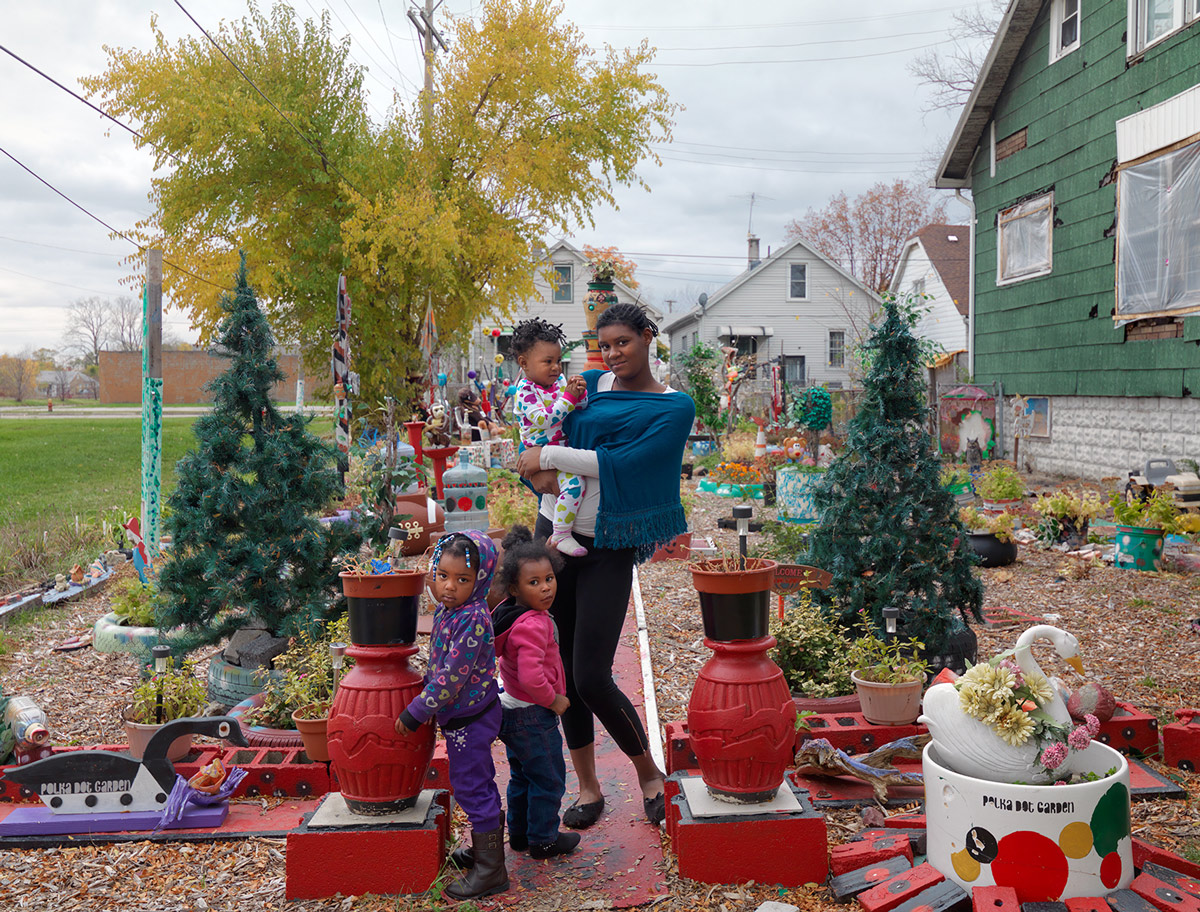
Caprice with her nieces in the Polka Dot Garden, Eastside, 2014
Robert, an 85-year-old retired interior decorator was afraid that an empty lot behind his house was going to be filled with trash so he began creating his imaginary ‘Polka Dot Garden’ to protect the property. It’s a place filled with fanciful sculpture and flowering plants that the neighborhood children can enjoy.
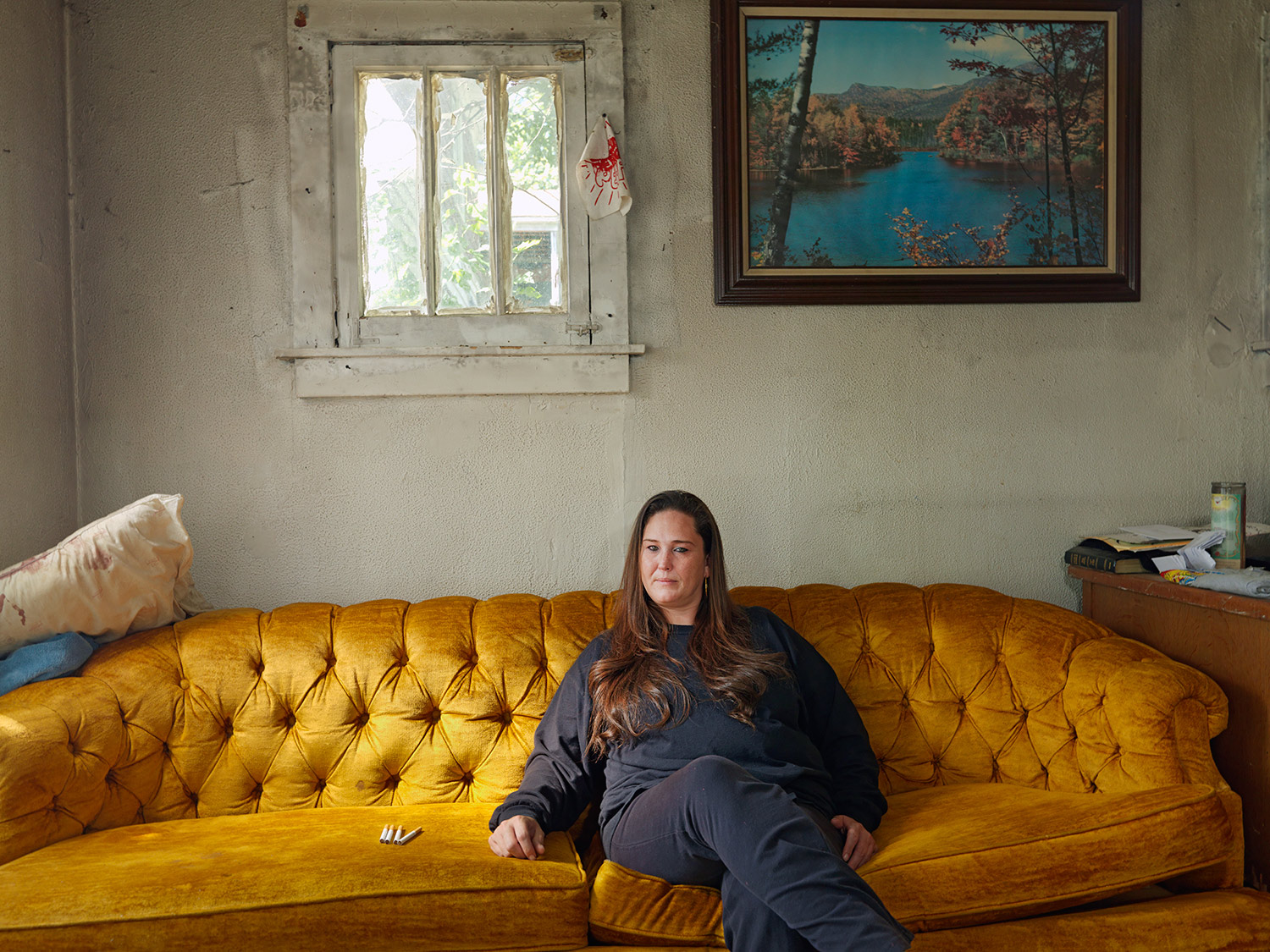
Patricia, 2012
Patricia in her new house on Goldengate Street with her cigarette ration

Andrew harvesting his garden, 2012
Andrew and his wife Kinga live almost entirely off of what their garden produces throughout the year. They live on a street where many of the residents trade and barter with each other.
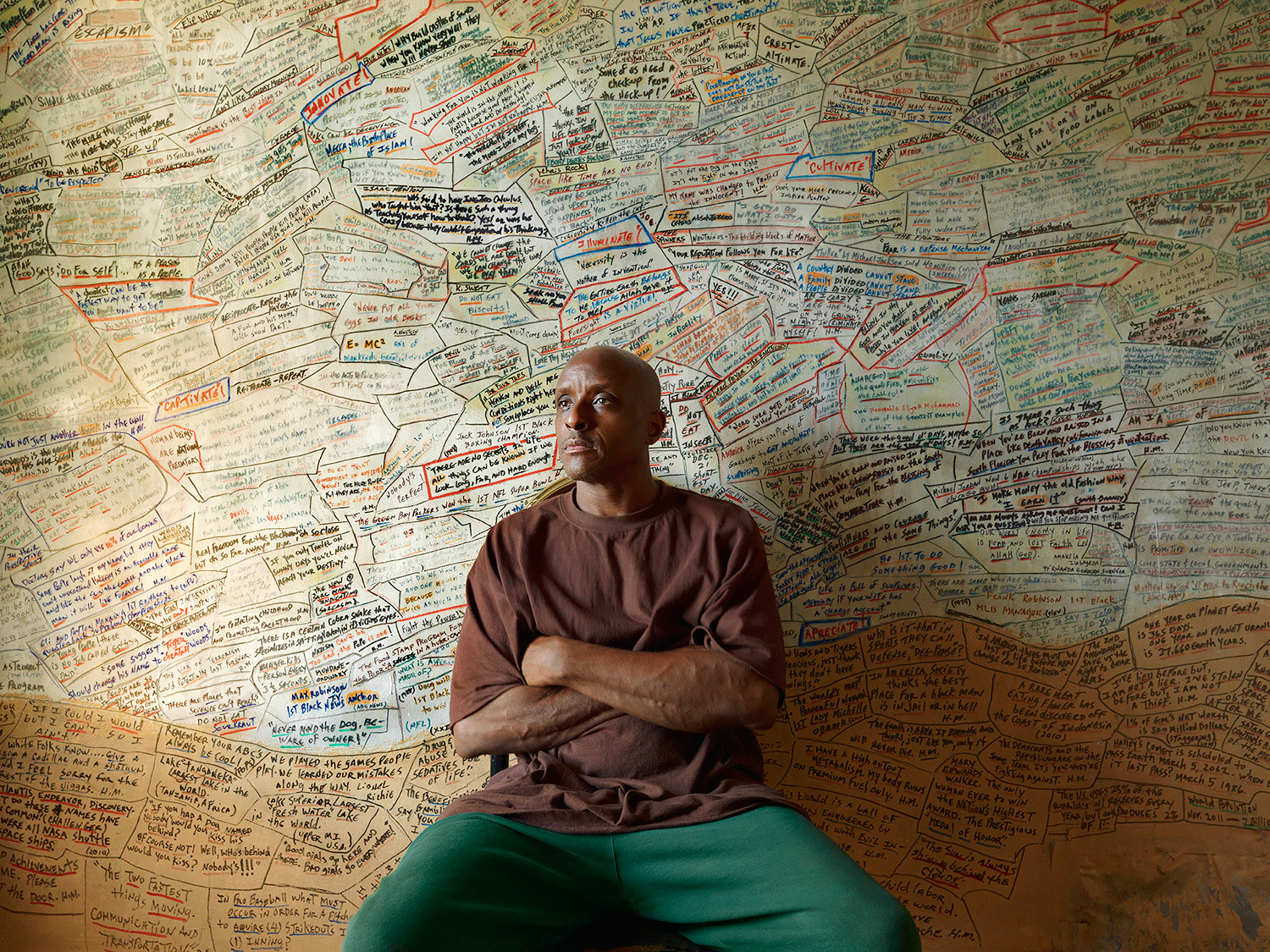
Hakeem, 2012
Broke, divorced, and after losing his business, Hakeem found his salvation through his Muslim faith. He scraped up $500 to purchase a run-down house on the north side of town and now repairs cars from an abandoned two-car garage across the alley from his house. Turning a small room of his house into a place for meditation and reflection, he continually writes original phrases of wisdom, inspirational quotes, and factual titbits on his walls that guide his moral and spiritual life. Always positive of mind, he doesn’t see himself as a victim anymore, but someone who accepts adversity as a metaphor to building one’s character.

Lynn Guyton, 2010
Lynn is the brother of Tyree Guyton, founder of the famed Heidelberg Project, Detroit’s most well-known and visited social arts project that addresses urban blight issues plaguing the city. heidelberg.org.

Marcus and Bey-Bey, 2012
Two brothers who have tattoos on their chests memoralizing the death of their mother who died from an asthma attack at the age of 34.
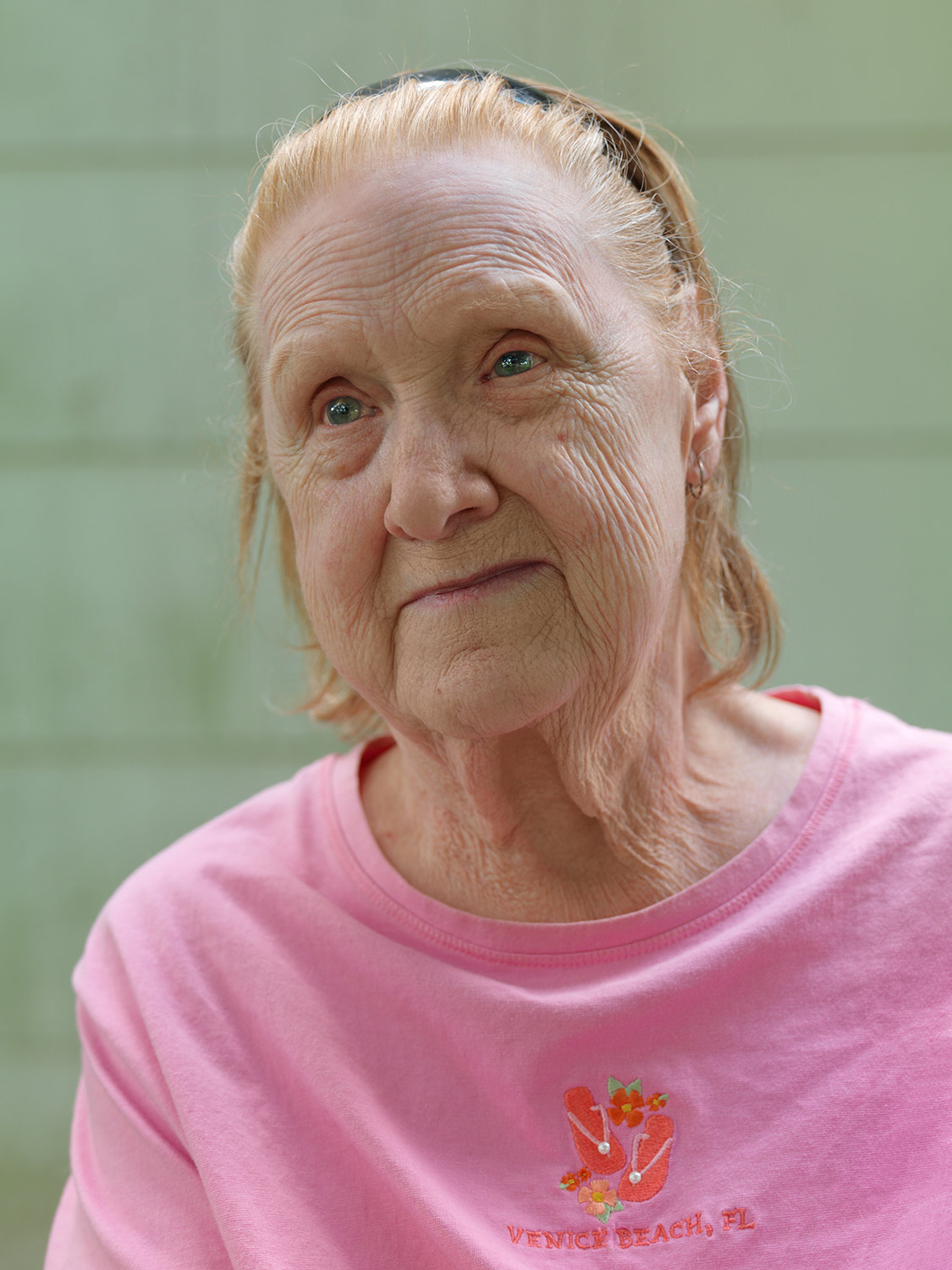
Miss Louise, Brightmoor, 2013
Miss Louise is a 42-year resident of the Brightmoor area, one of Detroit’s most blighted neighbourhoods. She said she still likes the area and she’ll stay until the day she dies because, as she puts it, “where else am I going to go?”. She always has a positive attitude about everything in spite of the constant crime and slowly watching her neighborhood completely empty out.
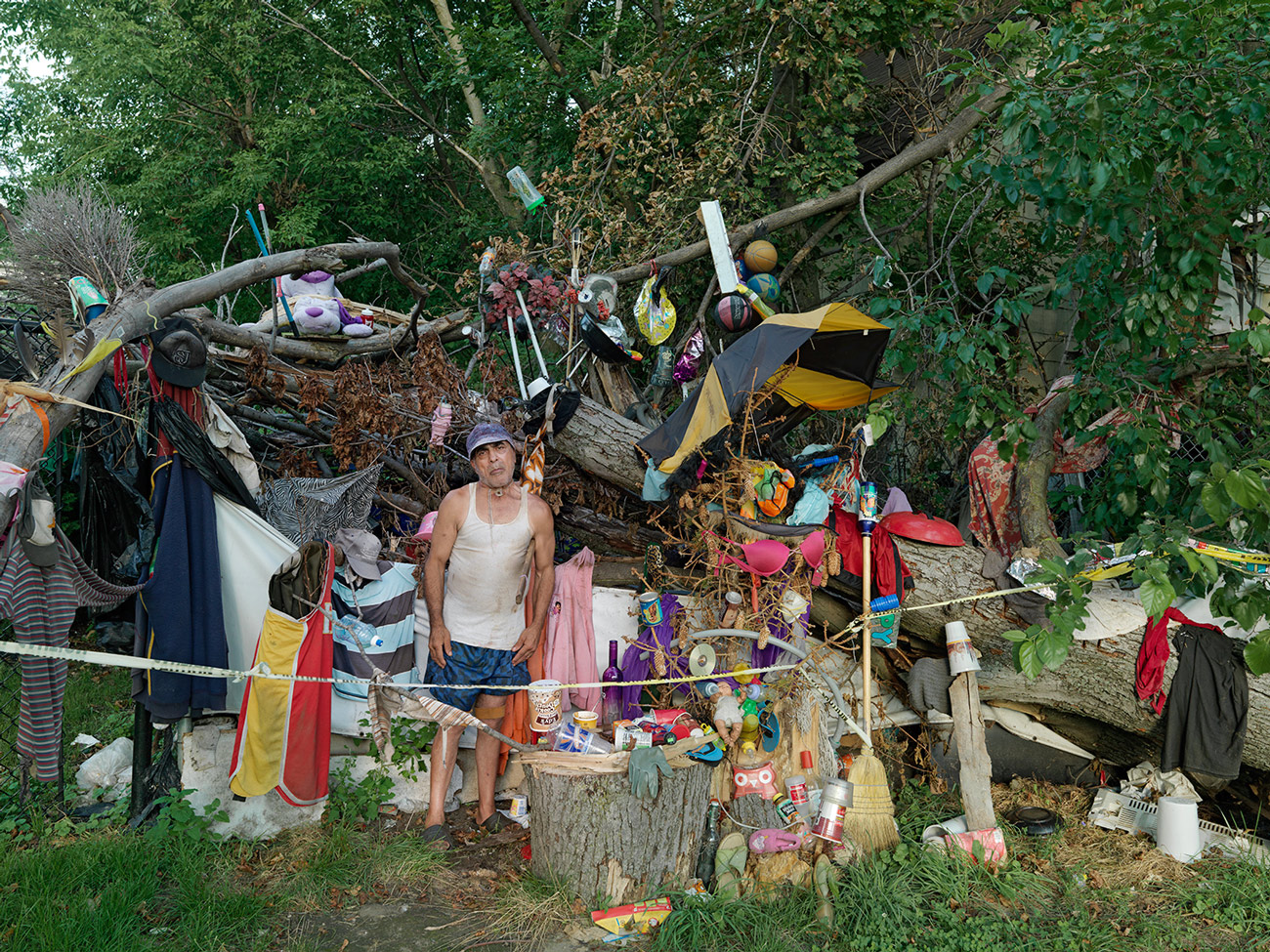
Migo, 2011
Migo’s house has been broken into over twenty times so as a political statement he placed worthless items in his front yard so the “junkies could take the junk”. His house is flanked by two gated parking lots and a new apartment housing complex. The neighbours are not amused, but he doesn’t care anymore.
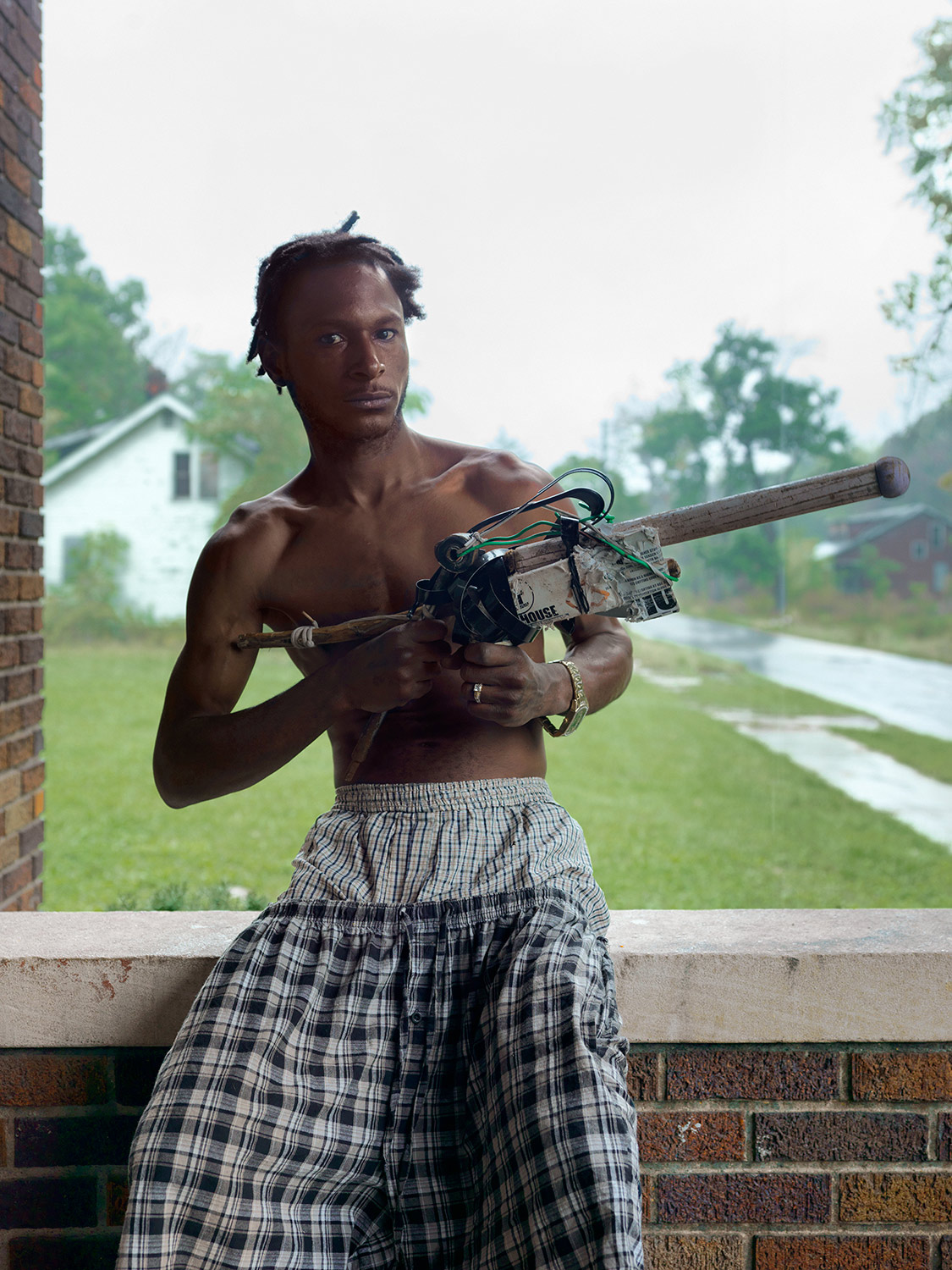
Los with his toy gun, 2014
The only kind of weapon he believes people should be allowed to carry in Detroit, or anywhere for that matter.

Tom’s house, 2011
After living on the street for several years, Tom took over a small patch of abandoned industrial property perched along the Detroit River. He has spent the last twelve years at this location and has built three small structures there, all of them made from discarded materials he finds in construction dumpsters. The first was a small 4 x 5 x 4 foot hut that he built on top of a 15-foot high abandoned rail line. He lived in this structure for seven years. He then built a 7 x 10 foot cabin tall enough for him to stand up in. He replaced his first structure with a slightly larger one that he made with walls that had six inches of insulation. He uses that structure to live in during the winter and heats it with candles.

Tom digging his new foundations, 2014
Currently Tom is in the process of building a 16 X 16 foot structure that will have two floors. He has completed the foundation which he dug out by hand and predicts it will take him two years to build, having few tools. Extremely resourceful, introspective, and independent, Tom has lived these past several years without heat, electricity, or running water.
Detroit Unbroken Down is published by PowerHouse Books
